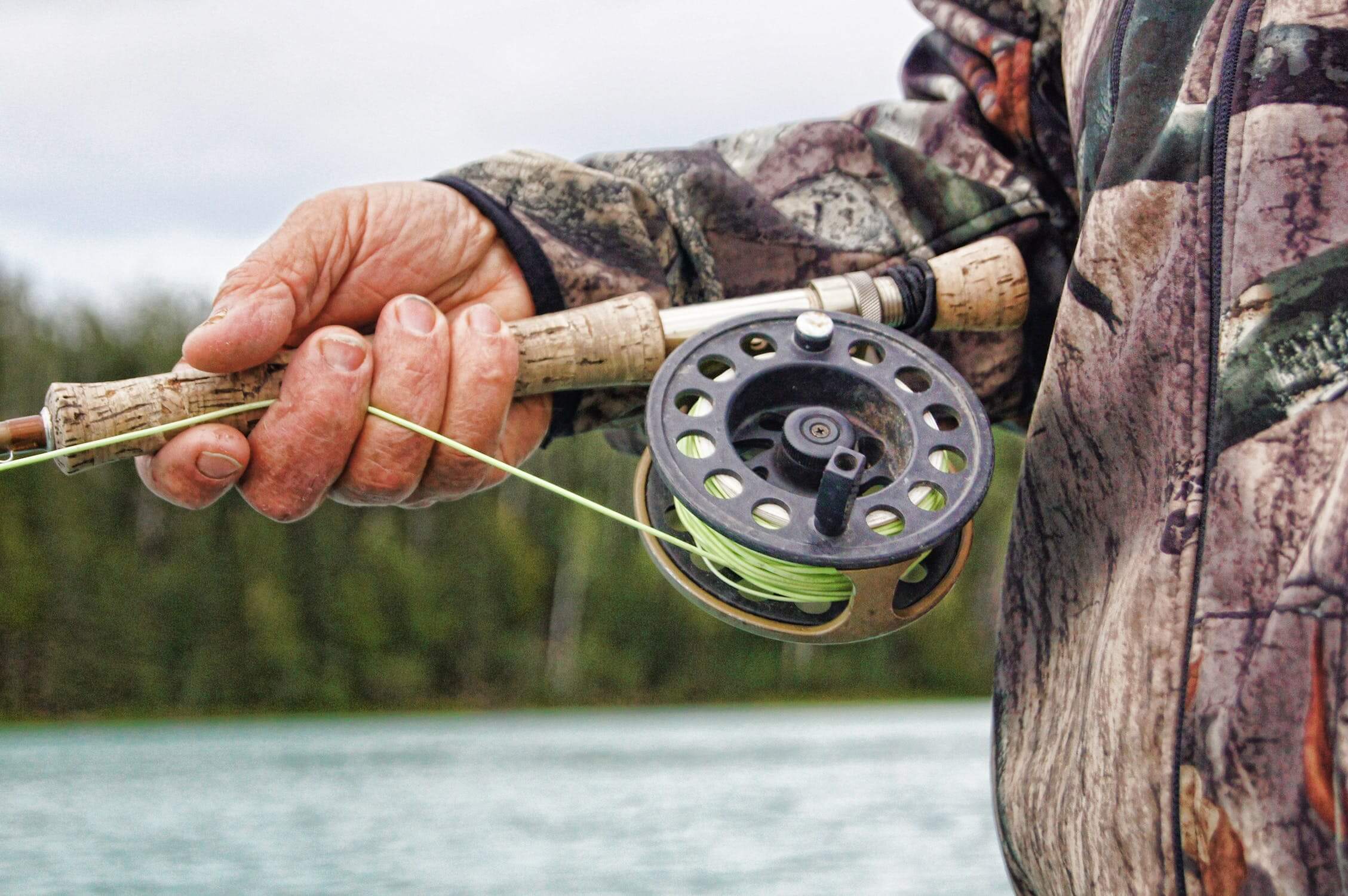One of the most common questions those new to fly fishing often ask is, “what is a fly rod weight”? and “how do I choose the right fly rod weight and line?” Fly rods and line are the corner stone of any fly anglers fishing gear.
Understanding and using the proper fly fishing setup is key if you want to have success out on the water as a fly fisherman. In this article we will ensure you understand the differences in fly rod weights and line and help you determine the right setup for any fly fishing adventure that may come your way.
What is a Fly Rod Weight?
So, what is a fly rod weight? Every fly rod is rated by a weight; this weight indicates what fly line should be used for that rod. Fly rods range from size 0 or 1 weight (which is the lightest rod) to about a 15 weight (which is the heaviest).
Typically, the weight of the rod is determined by the line weight that is paired with the rod. In most cases your line weight should match the weight of your rod. For instance, let’s say you are trout fishing on a river or stream and determine a 5 weight fly line would be ideal based on the species/conditions. You would pair this line weight with a 5-weight fly rod.
How to Choose a Fly Rod
Choosing the right fly rod is dependent on what kind of species you are targeting and the size of flies you plan on throwing. It’s important to understand what your intended use of the rod is going to be before selecting a line and rod weight. Are you going to be fishing in streams for small trout? Than a 1-4 weight is going to be your best option. But what if you plan on targeting steelhead or salmon? Than you are probably going to need a rod that can handle these bigger fish like an 8-10 weight. I have put together a general fly rod weight chart to help you determine what rod/line is best for you based on you targeted specie. Keep in mind this is a general rule of thumb that can be used as a starting point to ensure you select the proper setup.
Fly Rod Weight Chart

Best overall Fly Rod Weight
Versatility is something to keep in mind when determining the right fly rod weight, you should get. I know when I bought my first fly rod, I wanted to make sure that I got a rod that I could use for a variety of species and situations. The 5-weight is the best overall fly rod weight in my opinion and is a perfect rod choice if you are just starting out. The 5-weight, nine-foot rod is pretty much the industry standard for any freshwater fly fishing. It’s the perfect do everything rod that allows you to throw most flies and target a wide variety of fresh water species.
Fly Rod Weight for Bass
Fly fishing for bass can be a lot of fun, but choosing the right setup can sometimes be a challenge. With so many options and combinations available these days it can be difficult knowing which one is right for you. The overall best rod weight setup for bass in my opinion is 8 wt. rod paired with an 8 wt. floating line. This setup makes it easy to throw bigger bass flies while giving you the power you need to land these strong fish. But before selecting a rod/line it’s important to understand your intended use of the setup and your skill level. The conditions, angler’s ability, and the size of the fish all play into the right selection of a fly rod when targeting bass.
Fly Rod Weight for Salmon
The best rod weight is typically dictated by personal preference and water type/size. However, with a larger caliber of fish such as Salmon you are going to want a heavier rod that will allow you to cast the proper flies and handle these bigger fish. In my opinion the best rod weight for Salmon is an 8wt that is 91/2 to 10 ft. long. This however, is a good starting point and is more a good rule of thumb. Some anglers will use anywhere between a 5 wt. to a 9 wt. depending on the size of water/fish. The heavier rods will always give you more of an edge on the fish but on the other hand the lighter rods are more versatile and can make the fight a bit more challenging.
Fly Rod Weight for Trout
Anglers should think about the size of trout they plan on catching before selecting the right fly rod weight for trout. The 5 wt. is arguably the most versatile and effective trout fly rod weight. The 5 wt. allows you to place small flies with delicacy, but also has the backbone to handle large flies, and make longer casts. If you are looking for an all-around great fly rod the 5 wt. is tough to beat. However, if small creeks and streams is your game a small weight in the 3-4 range would be ideal. On the other hand, if you are going after bigger game or fishing with streams a 6-7 wt. might be a better fit. Below I have listed a general guideline to help you select the right trout rod for you situation.
- Small Trout = 0-4 wt.
- Average Trout = 4-6 wt.
- Big Trout = 5-7 wt.
How to Choose the Right Fly Line
Another key component of the fly fishing system is the line. Pairing a rod and line is a key feature that lays down the foundation for good casting. In fly fishing there are four main line components: backing, main fly line, leader and tippet. Each component comes together and provides anglers with the opportunity to make a delicate fly presentation that the fish cannot resist. The process of selecting the proper line begins with planning out the species, water, conditions and fish size that you plan on fishing most often. To help make sure you make the right line selection, check out the Choosing a Fly Line article written by troutoutlet.com for more detailed information about fly line.
Best Fly Rod Combination for Beginners
When just starting out choosing the right fly rod to learn on can be a challenge. Picking the right setup, size and action can seem overwhelming. However, knowing what you now know about the differences between rod and line weights and when to use each, this decision should be a breeze. In my opinion the perfect entry level rod for those just getting started out in fly fishing is the Orvis Encounter 5-Weight 9’ Fly Rod Outfit. This is an excellent outfit for beginners and is at a great price point. The 5 weight allows you to throw pretty much any fly in any fresh water condition and it super versatile.
Finals Thoughts
Selecting the right line and rod combination is a key component to fly fishing. As we have discussed in this article, each style of fishing requires a different rod weight and line setup. I hope you have found this information to be insightful and that it inspires you to get out there and catch some fish on a fly rod.
As always best of luck out there
Tight Lines!

